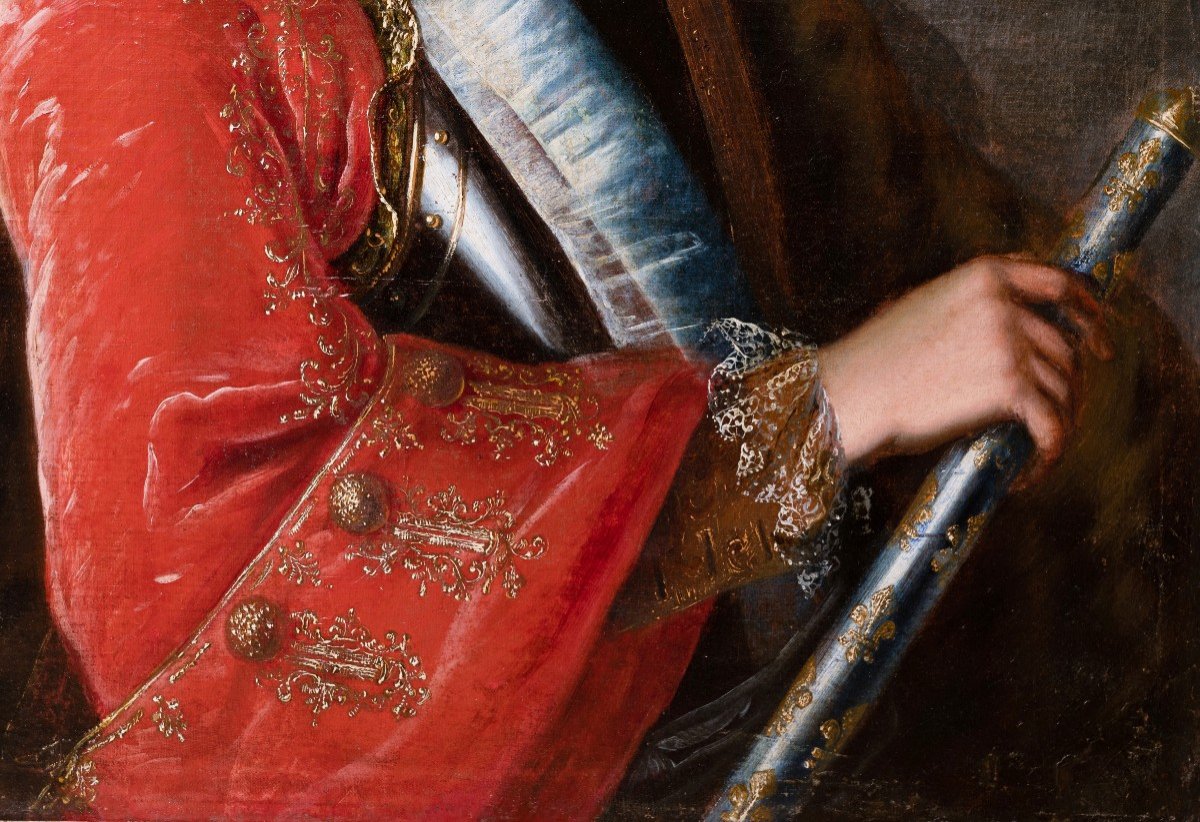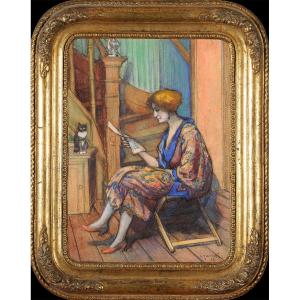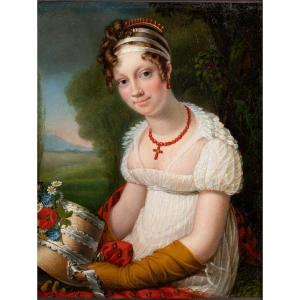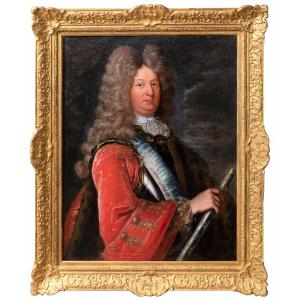The prince is portrayed wearing a breastplate and a red velvet jacket embroidered with gold threads.
Wearing a noble head, her solemn face with a slightly rosy complexion appears in the middle of the curls of her powdered wig.
With a white lace tie around his neck, he wears the blue ribbon of the Order of the Holy Spirit in a saltire. Hanging from the shoulders, a leopard skin coat.
In his right hand he holds the command staff adorned with fleur-de-lis.
All his majestic and belligerent allure conveys the image of a glorious and powerful prince.
His illuminated face stands out against the backdrop of a sky laden with black smoke from cannons.
A tight framing brings to our portrait a realistic dimension and intensifies the presence of the prince.
Cercle of Hyacinthe Rigaud (1659-1743)
18th century French school, circa 1700
Oil on canvas,
Dimensions: h. 90 cm, l. 72 cm
Louis XIV style giltwood frame
Framed: h. 115, l. 94 cm
While being an important member of the royal family, direct heir to the throne, The Grand Dauphin did not benefit from sustained communication and those of his portraits that have come down to us are essentially bust replicas of his famous portrait by Rigaud from 1697.
Immortalized by the Grand Master, the depiction of the Grand Dauphin at the Battle of Phillipsburg has aroused great interest and produced a considerable number of studio replicas. If the original preserved at the castle of Meudon has disappeared, the most successful version by Rigaud is currently in the Prado museum.
Despite a large number of known copies, full-length or half-length, all reproduce the original without variations. Yet a studio work probably created by Jean Ranc, kept at the Palace of Versailles, (inventory MV3597), offers another version of the Grand Dauphin in full length, it is this composition that most closely resembles our painting.
However our portrait differs from all known replicas and appears as an independent creation inspired by the portrait of Hyacinthe Rigaud. This allows us to suppose a painter working in an entourage close to Hyacinthe Rigaud who, by borrowing certain details, but changing others, succeeded in creating a unique portrait of the Grand Dauphin.
Louis de France, known as Monseigneur, or the Grand Dauphin after his death, was born in Fontainebleau on November 1, 1661 and died at the Château de Meudon on April 14, 1711.
The eldest son of Louis XIV and Marie-Thérèse of Austria, destined to succeed his father, Monsignor the Dauphin benefited from a specific education and training that Louis XIV wished to be the most successful.
Monsignor took part in several military campaigns between 1688 and 1694, including the glorious capture of Philippsburg in 1688.
He died at the age of 49 without ever having reigned.


























 Le Magazine de PROANTIC
Le Magazine de PROANTIC TRÉSORS Magazine
TRÉSORS Magazine Rivista Artiquariato
Rivista Artiquariato
